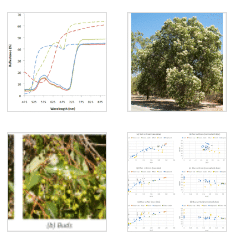T Campbell, P Fearns – Remote Sensing Applications: Society and …, 2018
Abstract
With Apis mellifera (the European Honey Bee) having an average forage radius of less than one kilometre from their hive, selecting the best location for beehives is critical for commercial beekeepers to optimise their honey production. In this study, we have used standard three-band digital cameras to develop and assess a simple parallelpiped algorithm to detect the flowers of the Corymbia calophylla tree in Western Australia, the largest source of honey in the state.
The algorithm has been tested in a number of situations and, within the bounds of the study, works to a better than 90% classification accuracy for Digital Single Lens Reflex camera images of trees within 15 m distance, and often better than 95%.
To determine how this approach could be used by Unmanned Aerial Vehicle platforms to detect flowering Corymbia calophylla flowering, image resolution was progressively degraded until flowers could not be detected. It was found that the cluster size of flowers (i.e. whether flowers occur individually or in groups) played an important role in determining the accuracy of flower detection, but overall a minimum resolution of 10 pixels per flower is required for reliable detection of flower pixels. While there is some improvement above this resolution, the effect is minimal. The key to accurate measurement of percentage flower cover is the accuracy of the classification of the background. If the background classification error is known for an image or scene, the percentage flower cover can be calculated with as little as 2% flower cover.
Based on this study, UAV platforms with standard RGB cameras appear to be suitable for detection of Corymbia calophylla flowers if surveys are designed within the bounds described. Thus, UAV surveys may prove to be useful for beekeepers to optimise the location of their beehives amongst a choice of different locations.

… plants. Using a StellarNet Blue-Wave spectroradiometer, they recorded spectra with a resolution of 1 nm across the 350 nm – 1,000 nm range and showed that flowers can provide better spectral discrimination than leaves. An …





